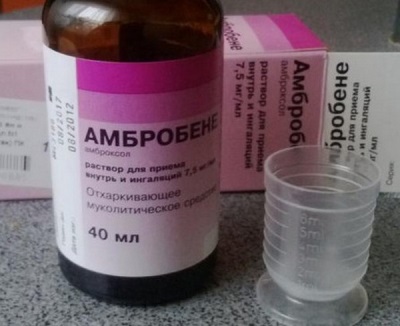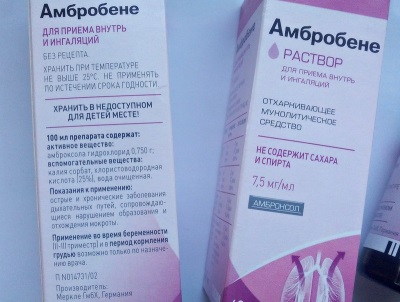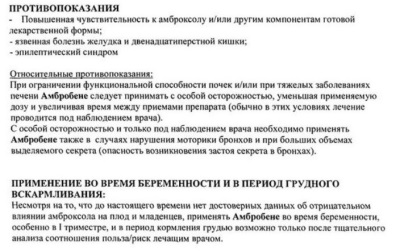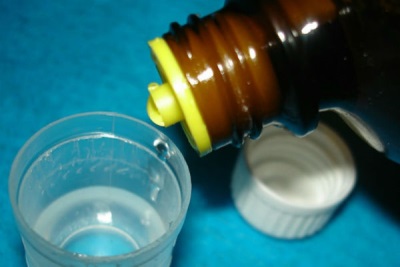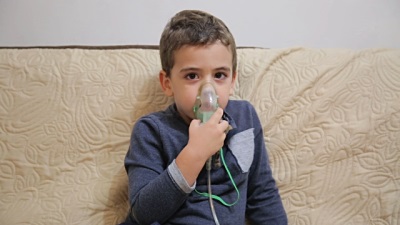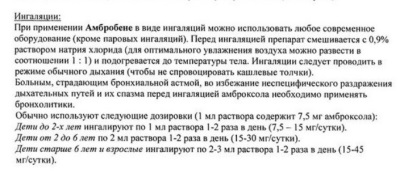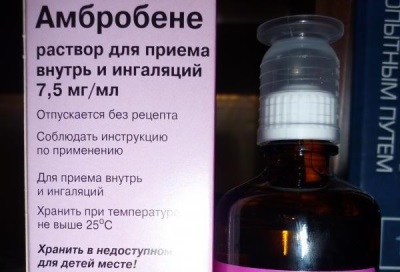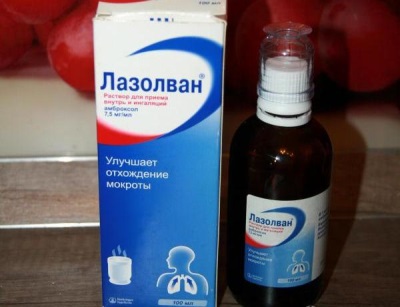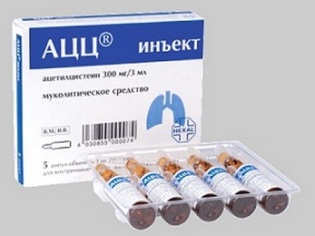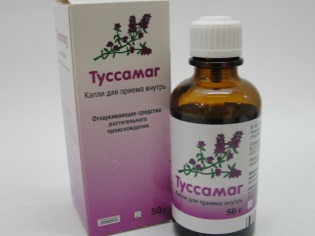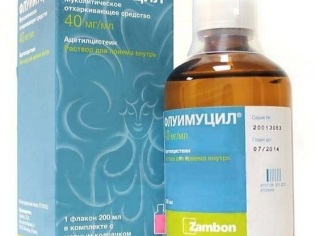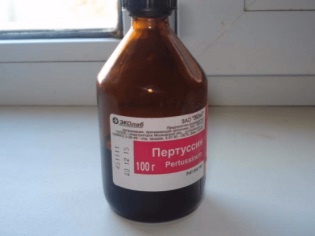Ambrobene inhalations for children
Many babies with a strong cough are prescribed inhalations for which they use a nebulizer. Such procedures not only moisturize the mucous membrane, but also help to get inside the respiratory tract some medications. One of the drugs that are introduced into the children's body, not only inside, but also inhalation, is Ambrobene. How to dilute it for a single inhalation, in what dose to use in children and how does this procedure work on a coughing baby?
Form and composition Ambrobene for inhalation
You can do inhalation with Ambrobene solutionwhich is intended for ingestion. This is a clear liquid poured into bottles of 40 or 100 ml. She has no smell and color, although there may be a slight yellow tint. The package also has a measuring cup to accurately dose the drug.
The active ingredient in this medicine is ambroxol hydrochloride. This compound in each milliliter of the drug contains 7.5 mg. It is supplemented with purified water, hydrochloric acid and potassium sorbate.
How does it work?
Ambrobene in solution is a mucolytic agent, since this drug makes sputum less viscous than contributes to its better separation. The active substance of the drug changes the rheological characteristics of the mucus and its adhesive properties. In addition, under the action of such an agent, the glands in the bronchial mucosa begin to synthesize the secret more actively. The result will be a cough relief, as the phlegm will cough up better.
How old can I use?
The use of Ambrobene in the form of inhalation in the first 2 years of life requires monitoring by a physician. Children under one year of the procedure must be prescribed by a doctor, determining the basis for such treatment and the correct dosage.
Indications
Inhalations with Ambrobene are recommended for diseases of the respiratory tract, in which sputum is very viscous and leaves with great difficulty. This method of drug use is often used in the treatment of bronchitis, bronchial asthma, pneumonia, bronchiectasis. He is in demand and with a dry cough caused by ARVI.
Contraindications
Procedures using Ambrobene should not be performed with hypersensitivity to any of the components of the drug. Also, contraindications for inhalation will be frequent bleeding from the nose and serious heart disease. It should not be manipulated at high body temperature.
For children with liver disease, epilepsy, impaired kidney function, peptic ulcer disease or other serious pathologies, the physician should determine the dosage and frequency of use of Ambrobene. Especially carefully inhaled with such a drug with too much mucus in the respiratory tract and impaired motility of the bronchial tree, as in such a situation, the secret may stagnate.
From the following video you can find out when inhalation is contraindicated. Commented on the popular pediatrician Komarovsky.
Side effects
Some children respond to inhalations with Ambrobene:
- Weakness
- Dry oropharynx.
- Abdominal pains.
- Headache.
- Increased salivation.
- Nausea
- Impaired stool.
- Violations of urine.
- Skin rash.
- Vomiting.
- Nasal discharge.
- Respiratory failure.
- High fever with chills.
Instructions for use
How to make inhalation
To make the procedure, you can use any modern equipment, called a nebulizer, and a steam inhaler for such manipulations is not suitable. To make the mixture inhaled by the child sufficiently moist, saline is added to Ambrobene. The prepared medicine is heated to t ° body and poured into a nebulizer. Keep mixed with saline drug can not.
The child is offered to breathe calmly so that due to deep breaths the cough does not increase. If a small patient has asthma, then bronchodilators are recommended to prevent spasms during inhalation, for example, Ambrobene uses inhalation with Berodual before using.
The procedure should be carried out 1.5-2 hours after a meal, and the next feeding should be no earlier than one hour after inhalation of the medicine. Bedtime manipulation is not done. How long Breathe Ambrobene, determined taking into account the age of the baby - in children under 6 years of age, the procedure lasts up to 3 minutes, and in older children its duration is up to 5 minutes.
Dosage and frequency of inhalation
The volume of Ambrobene solution, which is used for one inhalation, also depends on the age of the small patient:
- At the age of two years (for example, at 1 year), if the procedure is prescribed by a doctor, 1 ml of the drug is used.
- Children over 2 years old (for example, 3 years old) are recommended to use 2 ml of the solution for one inhalation.
- If the child is already 6 years old, a single dosage can be increased to 3 ml Ambrobene.
For children under 6 years old, the procedure is often carried out once a day, but in some cases the doctor prescribes 2 inhalations. Ambrobene is recommended twice a day for babies who are 6 years old.
Duration of treatment
Decide how many days you can do inhalation for a particular disease, should the doctor. Often the duration of inhalation therapy Ambrobene does not exceed 5 days.
Drug interaction
Application of Ambrobene solution should not be combined with treatment with antitussive drugs, under the influence of which the cough reflex is inhibited. This combination of drugs can provoke bronchial secretion stagnation, which will worsen the child's condition.
Ambrobene treatment for bacterial infections is well combined with antibiotic therapy, since Ambroxol improves the penetration of certain antibacterial agents (for example, amoxicillin and erythromycin) into the mucus produced by bronchi.
Terms of purchase and storage
It is possible to buy Ambrobene solution, with which it is inhaled, without a prescription. The average price of a bottle of 100 ml of this medicine is 170 rubles. The medicine can be stored for 5 years from the date of its release in a dry place, where the temperature will not rise above +25 degrees and children will not find the drug.
Reviews
About inhalations with Ambrobene there are different reviews, but in most of them parents confirm the high efficacy of the drug in the fight against cough. After the procedure, the child often coughs up expectoration better, which contributes to recovery. Such side effects as allergies, nausea, weakness, drying of mucous membranes and others are quite rare.
Analogs
The most frequent replacement for Ambrobene is a drug with the same active ingredient as Lasolvan. It is rather difficult to answer the question what is better - Lasolvan or Ambrobene for inhalations, because the therapeutic effect of such agents is almost the same, but due to different excipients the child can tolerate them differently. Selection of a suitable tool is best done with the doctor, especially if the child is still small or has any health problems.
Instead of Ambrobene, pediatricians can also prescribe inhalations with such cough-effective medicines:
- Solution ACC Inject.
- Drops Tussamag.
- Solution Fluimucil.
- Solution Pertussin.
In the next video, Dr. Komarovsky tells in detail about inhalations with a nebulizer, in which cases it is used and in which cases it is not.

